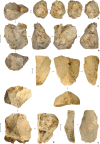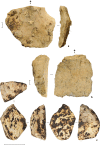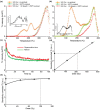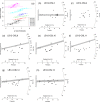A reassessment of the early archaeological record at Leang Burung 2, a Late Pleistocene rock-shelter site on the Indonesian island of Sulawesi
- PMID: 29641524
- PMCID: PMC5894965
- DOI: 10.1371/journal.pone.0193025
A reassessment of the early archaeological record at Leang Burung 2, a Late Pleistocene rock-shelter site on the Indonesian island of Sulawesi
Erratum in
-
Correction: A reassessment of the early archaeological record at Leang Burung 2, a Late Pleistocene rock-shelter site on the Indonesian island of Sulawesi.PLoS One. 2018 Aug 9;13(8):e0202357. doi: 10.1371/journal.pone.0202357. eCollection 2018. PLoS One. 2018. PMID: 30092045 Free PMC article.
Abstract
This paper presents a reassessment of the archaeological record at Leang Burung 2, a key early human occupation site in the Late Pleistocene of Southeast Asia. Excavated originally by Ian Glover in 1975, this limestone rock-shelter in the Maros karsts of Sulawesi, Indonesia, has long held significance in our understanding of early human dispersals into 'Wallacea', the vast zone of oceanic islands between continental Asia and Australia. We present new stratigraphic information and dating evidence from Leang Burung 2 collected during the course of our excavations at this site in 2007 and 2011-13. Our findings suggest that the classic Late Pleistocene modern human occupation sequence identified previously at Leang Burung 2, and proposed to span around 31,000 to 19,000 conventional 14C years BP (~35-24 ka cal BP), may actually represent an amalgam of reworked archaeological materials. Sources for cultural materials of mixed ages comprise breccias from the rear wall of the rock-shelter-remnants of older, eroded deposits dated to 35-23 ka cal BP-and cultural remains of early Holocene antiquity. Below the upper levels affected by the mass loss of Late Pleistocene deposits, our deep-trench excavations uncovered evidence for an earlier hominin presence at the site. These findings include fossils of now-extinct proboscideans and other 'megafauna' in stratified context, as well as a cobble-based stone artifact technology comparable to that produced by late Middle Pleistocene hominins elsewhere on Sulawesi.
Conflict of interest statement
Figures


















References
-
- Glover IC. Leang Burung 2: an Upper Palaeolithic rock shelter in south Sulawesi, Indonesia. Mod. Quat. Res. SE Asia. 1981; 6: 1–38.
-
- Groves CP. The origin of the mammalian fauna of Sulawesi. Z. f. Säugetierkunde. 1976; 41: 201–216.
-
- Musser GG. The mammals of Sulawesi In: Whitmore T.C. (Ed.), Biogeographical Evolution of the Malay Archipelago. Clarendon Press: Oxford; 1987; pp. 73–93.
-
- Birdsell JH. The recalibration of a paradigm for the first peopling of Greater Australia In: Allen J, Golson J, Jones J, (Eds.). Sunda and Sahul: Prehistoric Studies in Southeast Asia, Melanesia and Australia. Academic Press: London; 1977; pp. 113–167.
-
- Allen J, O’Connell JF. Both half right: updating the evidence for dating first human arrivals in Sahul. Aust. Archaeol. 2014; 79: 86–108.
Publication types
MeSH terms
LinkOut - more resources
Full Text Sources
Other Literature Sources

